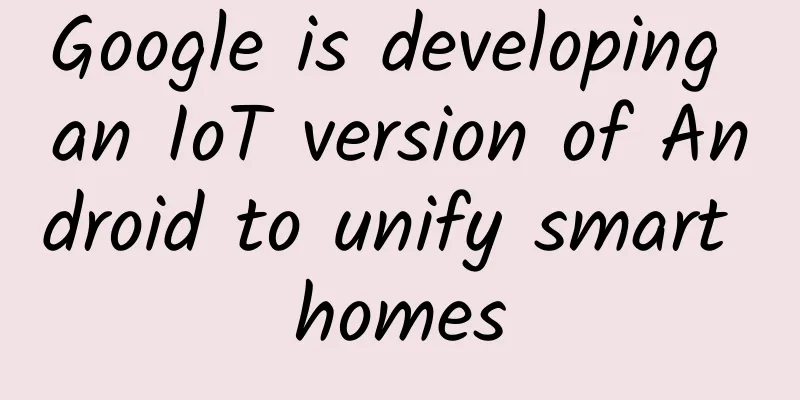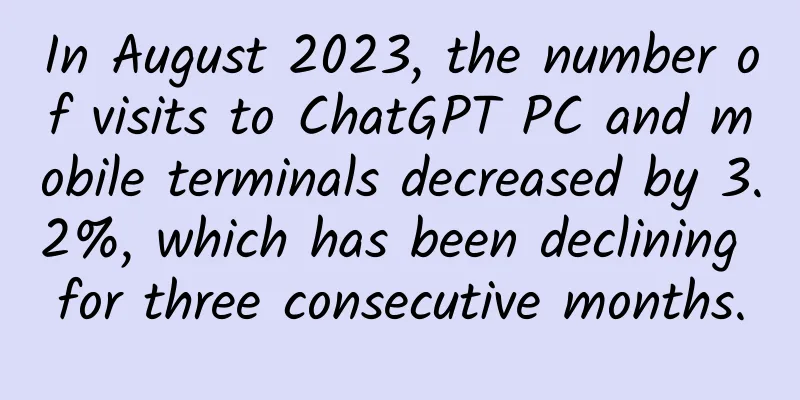Google is developing an IoT version of Android to unify smart homes

|
The battle for smartphone operating systems has come to an end, with Google's open source Android system becoming the dominant player with an 85% global share. Google is planning to push Android into every aspect of human life and work. The latest news says that Google is developing an IoT version of the Android system, which will be used for various small connected devices, such as smart access control systems, and this version will also carry the "Android" brand. 2014 was a landmark year, as Google's Android and Apple's iOS operating systems began to move beyond smartphones and tablets and into the smart home, smart car, wearable device, mobile health and Internet of Things markets. Both companies launched platforms and interface tools such as "Android Wear" and "HomeKit". According to the US technology news website The Information, Google is developing a new branch version of the Android system specifically for low-power IoT devices. It is reported that the development code name of this operating system is "Brillo". It is reported that the team that developed the IoT version belongs to Google's Android business unit, so this IoT version will have the "Android" brand to make users aware that this product also comes from the Android operating system. Previously, Google's wearable devices, smart car-related operating systems and platform tools all used the Android brand, such as "Android Wear" or "Android Auto." This version is mainly aimed at low-power IoT devices with a memory of around 64MB or 32MB. Google will make special modifications and optimizations to the Android system to further reduce power consumption requirements. The Internet of Things has become a new hot spot in the technology market. For example, light bulbs, door locks, sensors, and even toilets are gradually becoming intelligent. On the online crowdfunding website Kickstarter, you can also see a large number of smart hardware projects being financed. These smart IoT devices also require an operating system, and Google's Android business has seen the business opportunities. Most IoT devices use system-on-chip (SoC), have information input and output, and communicate via wireless networks, which are what Android, which was born out of Linux, is good at. However, the only drawback of Android is that it is too bloated, so it needs to be greatly simplified for IoT devices. Similar to the Internet of Things, Google previously optimized the Android source code specifically for wearable systems such as smart watches and launched the "Android Wear" operating system. Smart watches from companies such as Motorola Mobility and LG Electronics use this system. It is reported that due to the relatively simple functions of IoT and wearable devices, some hardware manufacturers have begun to develop their own operating systems. For example, South Korea's Samsung Electronics has begun to use its own Tizen operating system in smart watches, and independent smart watch manufacturer Pebble also uses a system different from Android and Apple. It is reported that in the face of the operating system fragmentation problem in the Internet of Things market, Google hopes to step forward and provide operating systems to smart hardware manufacturers for free. Google plans to unify the market and reproduce its success in the smartphone market. Google has already made plans in the fields of Internet of Things and smart home. It previously spent $3.2 billion to acquire Nest, a smart thermostat manufacturer (founder is Fadell, the father of iPod), and handed over the smart home business to Nest. After that, Google and Nest successively acquired companies such as Dropcam and Revolv. However, it should be pointed out that in the development of the IoT operating system, the Google Android team is still the protagonist, not Nest. It is not yet clear whether the two business units have any cooperation. Nest is currently building Google's smart home-related standards and collaboration framework. Previously, it launched the "Nest Collaboration Plan" to launch some development interfaces (APIs) for third-party smart home hardware manufacturers. The IoT version of Android may need to integrate these interfaces and third-party collaboration plans of Nest. Next week, Google will hold its annual I/O global developer conference. According to reports, Google will talk about the IoT version of Android at that time, but it is not yet known whether it will be a preview or a formal release. Some media speculated that following the branding conventions of Android such as "Android Wear", "Android Auto", and "Android TV", the IoT branch version of Android might be named "Android-Home". It is also worth mentioning that not long ago, Microsoft officially announced the version plan of the Windows 10 operating system. Windows 10 will have a branch version specifically for use on IoT devices. Apple has not yet launched a dedicated operating system for the Internet of Things and smart homes (it has customized a "WatchOS" for its own Apple Watch). Apple has launched HomeKit, a third-party interface and development platform. According to the latest report, in the iOS9 operating system, Apple will launch a client called "Home" that can control various HomeKit-compatible home appliances and home devices in one stop. |
<<: Win10 wants to be compatible with Android and iOS applications. What do you think?
>>: Optimize tableView performance - for the problem of card appearing when sliding
Recommend
I thought it was a stomach problem, but it turned out to be a myocardial infarction! During the rainy season, be alert to this symptom!
In recent days, at Zhejiang Provincial People'...
Wang Hong becomes a hot candidate for the Fields Medal. Why is the Kakeya conjecture so important?
A hundred years ago, Japanese mathematician Soich...
Peking University: Study finds that the risk of dementia in the elderly may increase due to vision problems
Older adults with untreated vision problems may h...
Apple will set off a new wave of smart hardware in 2015
Although the much-anticipated Apple Watch will no...
“Shaping 2021”, how much do you know about these scientific news selected by Nature?
On the 14th local time, the news editor of the we...
Dewu App Android Cold Start Optimization - Application
Preface Cold start indicators are very important ...
A new energy sedan worth 150,000 yuan also has the Snapdragon 8155 car chip. Which one should I buy from Geely/Deep Blue/Nezha?
In the previous shopping guide, 91che brought you...
The top scorers of the 2020 Lianjiang College Entrance Examination in liberal arts and science are announced: Lin Mengqing and Zhuang Yifei
The top scorers of the 2020 Lianjiang College Ent...
Media Boss Episode 3: Exploding IP Wealth Creation Plan 7-Day Class
Media Boss Episode 3: Exploding IP Wealth Creatio...
Look down at your belly button. If you see these signs, something may be wrong with your body.
Expert of this article: Yang Shi, Associate Resea...
Share this with your parents! Throw away these 7 things at home and stop saving them
Source: Dr. Curious The cover image of this artic...
App launches twice as fast! iOS 13 must-have update: 65 detailed updates at a glance
At the WWDC2019 conference this morning, Apple of...
MyBatis-Plus Tutorial for Silicon Valley 2022
Introduction to the 2022 edition of MyBatis-Plus ...
Even if they are not related, people who look alike share a lot of the same DNA?
Are there two people in the world who look extrem...









